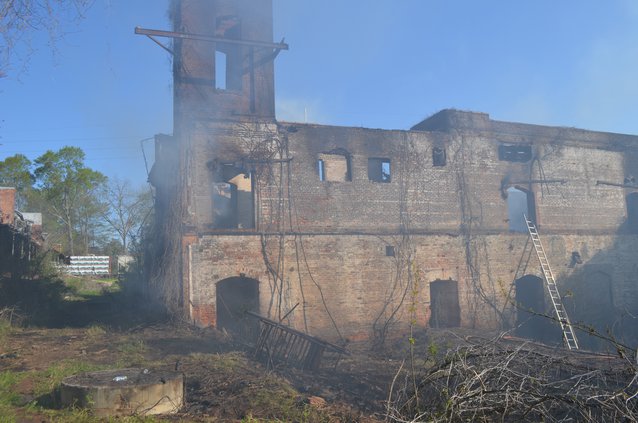Insurance and Safety Fire Commissioner John F. King said today an Easter Sunday fire at a vacant cotton mill in Social Circle was intentionally set.
The fire occurred at the former mill at 148 Cannon Drive in Social Circle around 1:50 p.m. on Sunday, April 4.
“Upon the fire department’s arrival, the second floor of the main structure was fully engulfed in flames,” King said in a news release.
“A second fire was found near the old maintenance room on the left rear side of the building. Working with the Social Circle Fire Department, we have ruled this fire to be incendiary in nature.”
The structure was originally built in 1940. Approximately 17,343 square feet of the main structure was left after a fire in the 1990s, the Georgia Department of Insurance reported.
The city’s fire chief, Ken Zaydel, said the building was already in bad shape before Easter, The Walton Tribune reported.
“It’s gutted more than it was,” he said. “I don’t know that there was a lot salvageable to begin with.”
The city’s first textile mill opened in 1901 and went bankrupt after a few years, but a second mill — the Social Circle Cotton Mill Co. — was chartered in December 1913. It became part of Cannon Mills Co. of North Carolina in 1978.
The company employed about 400 people at its peak and still had about 250 workers in the mid-1970s, making wide cotton-blend bed sheeting.
Eventually known as Cannon Mills, the Social Circle plant closed in 1983 and a fire damaged more than half of the main building in April 1994.
Carter Jackson Inc. of Augusta owns the 3.84-acre site.
Although the site is vacant, it’s an important part of the city’s past, and its future.
“It’s still in our comprehensive plan as an anchor for our downtown,” City Manager Adele Schirmer told the Tribune.
She said the city’s Downtown Development Authority recently worked with the property owner and a contract purchaser to submit an application to the Environmental Protection Agency for a brownfields assessment grant.
Such a grant would allow the DDA to secure funding to clean the site and set a path for the property’s future. The authority should learn soon if it received the grant, the newspaper reported.
It wouldn’t be the first cleanup effort of the property. The EPA got involved in the late 2000s due to paint thinners and industrial grade paints stored at the old mill, believed to be a temporary measure on their way to disposal in Florida, but somehow never reclaimed, the Tribune reported.
“What has not been done is an assessment of the property from the years of use as a mill and a power plant and that sort of thing, so separate of the storage from those materials,” Schirmer said.
“After the mill was no longer operating, there were some barrels of materials that were stored on the vacant property. That was cleaned up. To the best of my knowledge, that file with the EPA is done.”
Schirmer said there is “wonderful” potential for the property.
“There’s lots of examples of restored mills across the South and that has been a vision for that property,” she said.
The grant would allow all stakeholders to know just how much it would take to clean the property and prepare it for its next phase.
“There still needs to be an entity that can step forward with the investment to create something on that property,” Schirmer said.
“It has huge potential and has been identified for over a decade. It’s a key anchor for downtown. It holds the ability to really expand the commercial-type uses and we don’t want to lose the character of what we’ve got, and also create a location where we might be able to create downtown living, which is highly desirable.”





